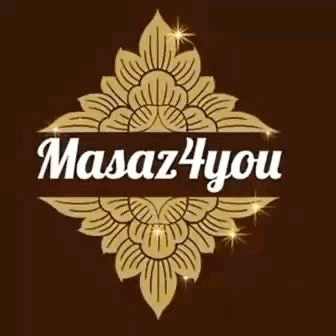Why we have stiff muscles and how to relax them | Massage experts
- Ondřej Lenc

- Oct 12
- 3 min read

Stiffness, stiffness, cramps, pain - these are just some of the words our clients use to describe their muscles when they come to us in need of treatment.
When we feel discomfort in our bodies, it can impact our overall well-being, but finding ways to treat discomfort at the source can seem like an impossible mission. At Masaz4you, we focus on the different muscle groups that cause our clients pain and tension. Combined with a variety of therapeutic techniques, our Masaz4you masseurs use varying degrees of pressure to increase blood flow to the target area and stretch out the sore tissue that is causing stiffness.
While massages are a way for many individuals to reduce stiffness in their bodies, the question of why our muscles are stiff in the first place may be on the minds of many who experience it. This article will begin to answer that question and describe ways to help you reduce muscle tension so you can return to your pain-free self.
What are the causes of muscle tension?
If you're experiencing muscle stiffness or tension, you might think that the feeling is hard to describe. It can be difficult to pinpoint exactly what muscle stiffness feels like because it can be very different for everyone. However, muscle stiffness is characterized by the inability to relax your muscles to the state they should normally be in. Some people experience sharp pain, while others feel more like a cramp or have difficulty moving.
We have about 600 muscles in the human body and they can be divided into three types - skeletal, cardiac and smooth. Muscle tension usually affects skeletal muscles, which make up 30-40% of the total body weight. This group of muscles helps us move, function and perform daily activities.
When we want to use or move a certain part of our body, our brain sends a nerve signal to each of the muscles in that part of our body, and when that happens, our muscles naturally contract. Usually, after a contraction, our muscles then return to a relaxed state until we need to use them again. However, sometimes our muscles can remain in a fully or partially contracted state for a period of time.
One of the biggest causes of muscle tension is stress. Stress can take its toll on our bodies and minds, and can manifest throughout the body as physical pain and tension, as well as other complex symptoms such as high blood pressure or digestive problems. When it comes to muscle tension, stress can affect the nervous system and its functionality, which must function optimally in order for our muscles to go from a contracted to a relaxed state. When our nervous system is affected, our muscles can often suffer.
Other causes of muscle problems include:
Delayed-onset muscle soreness (DOMS): This can occur several days after a hard workout and can cause a variety of physical symptoms, such as severe pain and tenderness and reduced joint range of motion (DOMS is common in athletes, and sports massage can target the various areas that cause pain).
Dehydration: Dehydration: Not being properly hydrated can increase the feeling of muscle and joint pain, especially since our muscles (and kidneys) are made up of 79% water. Drinking enough water helps prevent muscle and tendon tightness and can help lubricate joints so we can move without pain.
Prolonged inactivity: Many of us are working from home due to the pandemic, which means we spend long hours sitting at our desks. Not getting up to move and exercise our muscles regularly can lead to stiffness, making it even more difficult to move. A sedentary lifestyle can restrict our muscles, which can lead to stiffness over time.
Poor posture: Maintaining good posture is essential whether we are sitting, standing or lying down, although it is not always the easiest thing to do. Poor posture can cause musculoskeletal imbalances and can lead to muscle and joint pain.
Muscle strain: When we overuse any area of the body, it causes soft tissue injury and can affect the functioning of our muscles and tendons. Maintaining consistent massages can help address this problem.
If you experience muscle tension at high intensity, we strongly recommend that you contact your doctor to rule out serious causes.
Stretching is a great way to help loosen up tight muscles as it can help us maintain flexibility and freedom of movement. Regular stretching has also been shown to minimize the amount of pain you may experience in various areas of your body.
Stretching can be applied to different parts of the body that are struggling with stiffness. For example, if you notice that your leg muscles are stiff, you can focus on stretching your calves and hamstrings. There are stretches for almost every part of the body, and when done safely and correctly, they can provide great relief.
Translated with www.DeepL.com/Translator (free version)




Comments